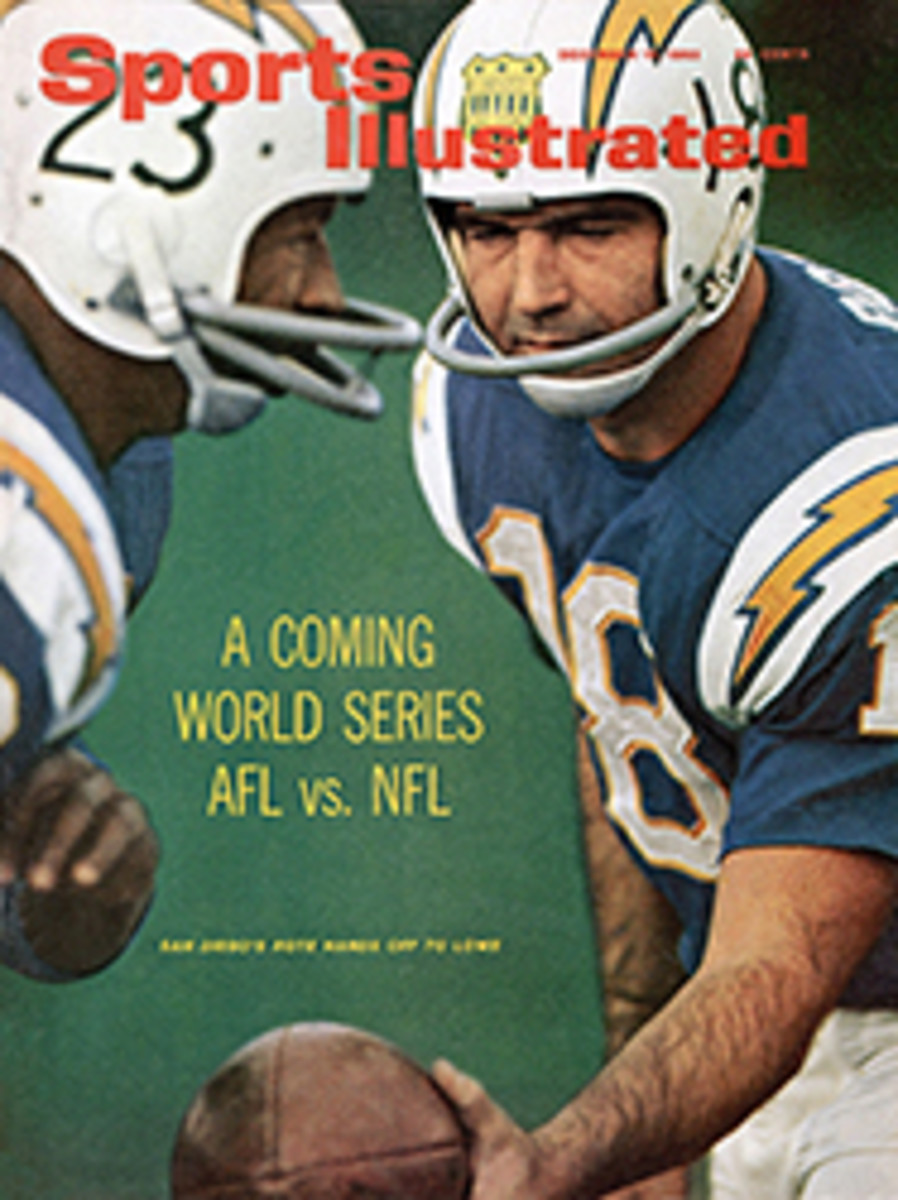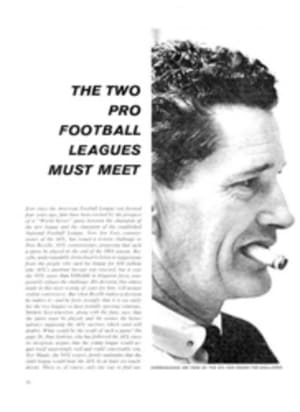
Two yards and the clock
The 1963 Army-Navy game will surely be remembered for the play that never was. Army kept its poise (too much poise) but Navy kept the game, 21-15, and in so doing won the right to meet National Champion Texas in the Cotton Bowl on Jan. 1. Had Army won, it would have replaced Navy in Dallas, despite its 28-0 loss to once-beaten but apparently unwanted Pittsburgh.
The Cadets from West Point, who put forth a heroic effort all afternoon, were not much more disappointed than many of the 100,000 in attendance and the millions who watched on television. Indeed, all anyone wanted as those last precious seconds were squandered down on the field was for Army to run its fourth-down play from Navy's two-yard line. Whatever had resulted—an Army score or a brave Navy stand—would have made a perfect ending to a brilliant day of college football.
From the opening moments it was evident that this 64th annual game might be memorable. The blocking and tackling was so fierce that Texas Coach Darrell Royal, whose own teams are noted for their aggressive style, was impressed. Watching from the press box, Royal said, "I'll tell you one thing. Nobody's backing off down there. They're trying to maim each other."
If it seemed that the Cadets were slightly more aroused, this was due at least in part to Army's fine scouting of Navy. On its first possession, Army rammed 65 yards to a touchdown by running outside of Navy's normal 4-4-3 defense. Army set a flanker to take away Navy's corner back, and then swept aside the end. Curiously, Navy did not alter its defense throughout the first half, which ended 7-7.
In the second half Navy's defense looked the same, but subtle adjustments were made by the charging linemen, and Army found the going tougher. Meanwhile Quarterback Roger Staubach, Navy's Heisman Award winner, responded to the gravity of the occasion with his own running and passing and by exploiting the talents of Fullback Pat Donnelly. Navy went ahead, stopped Army on its own eight and then increased the margin to what looked like a safe 21-7 lead with only 10:32 remaining.
"I had no idea Staubach was that quick," said Royal. "You've got to be under control when you rush him. He loves to come out of there, doesn't he? Well, one reason he gets away with it is because the linebackers are dropping off to defend against the pass, and when he decides to run he's quick enough to get away from those old clubfooted tackles and guards."
Just when Royal was adjusted to the idea of meeting Navy in the Cotton Bowl, however, the Midshipmen suddenly were confronted with a whole series of crises. Army came back to life on the running of Quarterback Carl Stichweh, who very nearly out-Staubached the Navy; his chief aide was Halfback Ken Waldrop. The Cadets moved smartly to a touchdown and a two-point conversion, both supplied by Stichweh's roll-outs. Royal said, "They're going to try an on-side kick just as soon as the referee gives them the ball. What we do in a situation like this is put our backs and ends up on the front line. They're more agile."
Time was with Army
Navy made no such move, and the agile man was Stichweh, who recovered the kick for Army 11 yards downfield at the Navy 49-yard line. Now all that had gone before was meaningless. Army had the ball and the momentum, and the clock showed six minutes and 13 seconds—plenty of time to score its first victory over Navy since 1958, and its first ever over Navy Coach Wayne Hardin.
Army Coach Paul Dietzel waved his clipboard, Navy's Hardin unbuttoned his coat and put his hands on his waist, and the Cadets chanted, "SMU and Army, too," reminding all within earshot that Navy had been beaten once this season, by Southern Methodist. Waldrop, Fullback Ray Paske and Stichweh moved Army surely but with agonizing deliberation toward the goal. With a minute and 38 seconds left, the Cadets had a first down on the Navy seven—still plenty of time—but there could have been even more had Army not gone about it all so methodically, as though minutes were as plentiful as seconds. Once before, when time was called for a first-down measurement at the Navy 22, Army had neglected to take advantage of the interlude to call its next play, and only after the clock began to run again did the Cadets huddle. More than 20 seconds would have been saved in that instance. Nor did Army ever deliberately throw the ball beyond a receiver's hand in order to stop the clock or go into what most teams call a "two-minute drill," which requires calling a series of plays in the huddle and running them in sequence to conserve time.
Army's ultimate downfall, therefore, was its own indiligence. When it needed time the most—in the last 58 seconds, third down on the four and no timeouts left—it was still deliberating and forcing its luck to what, finally, was the breaking point. Referee Barney Finn stopped the clock momentarily so that Stichweh's signals might be heard. This was a break for Army, but the Cadets unwisely rehuddled, unaware that the clock had been restarted. There was no margin left when Navy's defenders were slow in getting untangled from Army's Donnelly—and the officials were unaccountably slower in resolving the difficulty—on what turned out to be the last play of the ball game. Stichweh seemed as helpless as a boy caught with an inadequate alibi.
"I was underneath all of it," said Navy Tackle Jim Freeman, "but I had sort of a peephole to look at the clock. I was in no hurry to get up." Navy Guard Alex Krekich was also there: "I don't think any Navy player was in a hurry to get up." And Navy Guard Fred Marlin was there: "I think Army caused some of the confusion. They were scrambling around, trying to get up, and kept knocking everyone back down."
Navy's Roger Staubach was not there. He stood helpless on the sidelines next to Wayne Hardin and prayed. "I must have said a hundred Hail Marys," he told a reporter later.

